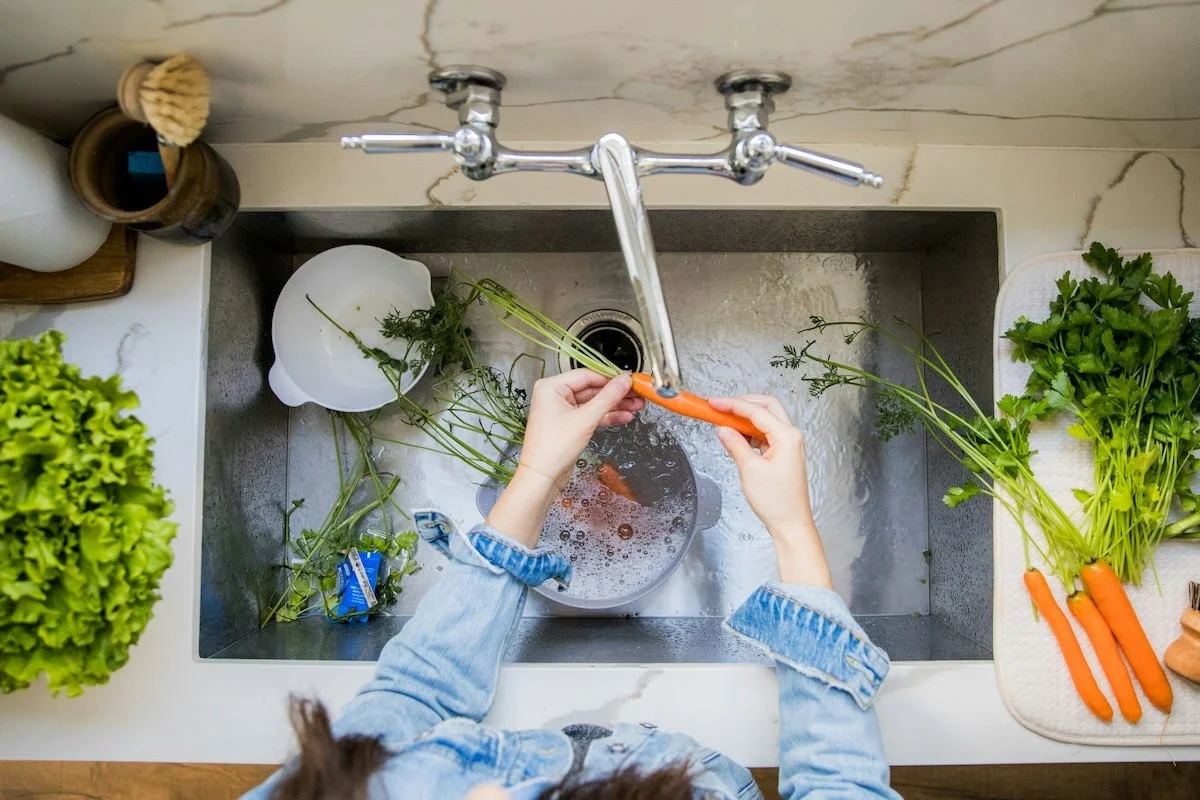Can You Use a Garbage Disposal With a Septic Tank?
The simple answer is yes, you can use a garbage disposal with a septic tank—but only with care and proper maintenance. There’s no denying the convenience of a garbage disposal. It makes cleanup faster and keeps food scraps out of the trash. But if you have a septic tank, you might want to go easy on it.
How a Garbage Disposal Works With a Septic System
A garbage disposal grinds food waste into small particles that wash down the drain. In a home with public sewer service, that waste travels to a treatment plant. In a home with a septic system, it flows into your septic tank instead.
Inside the tank, solids settle to the bottom and bacteria break them down. Liquids move on to the drain field where they are filtered by soil. Adding ground food waste changes the amount and type of material entering the tank, which can speed up how quickly solids build up and may interfere with natural bacterial activity. That means your septic tank could need pumping more often than the typical two to three years.
Common Risks of Using a Disposal
Running a garbage disposal without good habits can lead to costly septic problems. Key concerns include:
Increased sludge buildup: Extra food particles create more solids, causing the tank to fill faster.
Clogs in the plumbing or tank inlet: Grease, fibrous scraps, or large food pieces can collect and restrict flow.
Disrupted bacteria balance: Certain foods, like meat and dairy, can slow down the bacteria that break down waste.
Drain field strain: Heavier solids mean more suspended matter can reach the drain field, risking backups or soggy ground.
Tips for Safe Garbage Disposal Use With a Septic Tank
If you choose to keep your garbage disposal, adopt these habits to reduce stress on your septic system.
Limit What You Grind
Avoid putting these items down the disposal:
Grease, oils, and fats
Fibrous vegetables like celery and corn husks
Hard materials such as bones, pits, and shells
Starchy foods like pasta, rice, and potatoes that can swell with water
Coffee grounds and eggshells, which form sludge
Stick to small amounts of soft, biodegradable scraps when possible.
Run Plenty of Cold Water
Use a strong stream of cold water before, during, and after grinding. Cold water helps food solids move cleanly through pipes and solidify grease so it can be caught and pumped out with the sludge.
Use Your Disposal Sparingly
Treat the disposal as a backup rather than a primary waste bin. Compost fruit and vegetable scraps when possible and scrape larger leftovers into the trash.
Pump the Tank More Frequently
Because a disposal adds solids, schedule septic pumping more often. Many households with disposals need pumping every one to two years instead of every two to three. A professional service like Bailey’s Septic can advise on the best interval for your household size and usage.
Alternatives to Using a Garbage Disposal
If you prefer to avoid the extra maintenance, consider these options:
Composting: A compost bin or pile turns food scraps into rich soil for gardens.
Sink strainers: A simple mesh strainer catches small bits before they enter the drain.
Food recycling services: In some areas, municipal or private companies collect organic waste.
These methods reduce the load on your septic tank and can save money on pumping over time.
Signs Your Septic System May Be Overloaded
Whether you use a disposal or not, stay alert for warning signs that your septic system needs attention:
Drains or toilets that empty slowly
Gurgling sounds in plumbing
Wet or foul-smelling spots in the yard near the drain field
Sewage odors inside the home
If you notice any of these issues, call a professional promptly to prevent further damage.
Regular Maintenance Matters
Proper septic maintenance is key to long system life. We recommend:
Routine pumping based on your household size and disposal habits
Regular inspections to check tank condition and component function
Careful water use to avoid flooding the system
By combining smart disposal habits with regular pumping, you can keep your septic system operating efficiently.
Key Takeaways
You can use a garbage disposal with a septic tank, but it requires extra care.
Limit what you grind, run plenty of cold water, and use the disposal sparingly.
Plan for more frequent pumping—often every one to two years.
Composting or using a sink strainer can help reduce solids and lower maintenance costs.
Contact a trusted septic professional if you notice slow drains, odors, or wet spots.
The Bottom Line | Bailey’s Septic Services Berks County
By managing what goes into the drain and scheduling regular service, you can protect your septic system and avoid expensive repairs. At Bailey’s Septic, we’re here to help with pumping, inspections, and advice for homeowners across Berks County and the surrounding communities.


